Guest blogged from D.C. by Margie Burns
Deputy Attorney General Paul McNulty returned to testify before Congress one more time today, but without shedding much new light on the much-criticized firings and hirings, alleged to be politically motivated, in the Department of Justice.
The Subcommittee on Commercial and Administrative Law of the House Judiciary Committee, in another attempt to extract some truth about the DOJ personnel matter, held a hearing with McNulty as the sole witness. Under polite, soft-spoken but excruciatingly poignant questioning by Committee Chair John Conyers (D-MI), McNulty did clarify one thing: indeed it does seem that his part of the DOJ has done very little about “caging.”
Caging, as Rep. Cannon (R-UT) helpfully pointed out, “is a term of art in mailhouses” – it refers to the place where letters go when they have no address, all batched up in a separate room.
As Conyers gently reminded the audience, “caging” in the context of elections “is not an issue of the mail at all.” Voter caging, in the context of elections, means blocking voters out – choosing whole lists of voters whose vote will be challenged, chosen by whom and the criteria for challenge enunciated by whom, under this administration, still not fully explained.
Actually, not explained at all. Though it wasn't for Conyers' lack of trying to get information from McNulty about it...
During his last five-minute round of questions – each Representative is allotted five minutes to question the witness, per round, equally – Conyers asked McNulty, in effect, whether it was true that McNulty hadn’t known anything about caging in his prior testimony to Congress. McNulty reaffirmed that indeed he had not.
The following is paraphrase, the gist of question-and-answer to McNulty regarding voter caging:
Follow-up question: You had an article about it? The June 16 article by Greg Palast? – Answer: Yes.
And you also had had the topic of caging included in your briefing, before you testified? – Yes.
Yet you never looked into caging? – Right. “I didn’t read the article [at that time],” McNulty clarified.
And you also didn’t read the Tim Griffin email about caging in the briefing book? – Apparently not.
So, it would be a reasonable inference that the caging of black voters is not high on your agenda? – “I’m not sure what you mean by that,” McNulty said.
Have you read the article by now? – Yes, by now I’ve read the article and the email.
“We’ve got a whole chain of testimony,” Conyers followed up, expressing hope or faith, presumably of the evidence-of-things-not-seen variety, that there is “a commitment that we’ll work on it together.” – McNulty responded by noting that the “issue” is one “that’s important to you,” meaning Conyers.
McNulty, of course, is leaving his position at the DOJ this summer. He is seeking private employment. There is little time left for him to work with Conyers on the issue of voter caging. Sad as this whole exchange was – and damning as it is to have a high-level official so plainly reveal his lack of interest in what they used to call one-man-one-vote – this was probably the high-water mark of the entire hearing. As mentioned up top, little else was equally clarified.
Subcommittee Chair Linda Sanchez (D-CA) opened the hearing by pointing out that “we still don’t have the answers to two questions”: 1) Who made the decision to fire several US Attorneys? And 2) Why were these particular prosecutors chosen?
We still don’t have those two answers, and beyond indirectly strengthening the inference that both decisions must have come from the White House – back to the topic of those emails – the hearing contributed to very little headway.
I still do not understand how any American in a position to do something about these abuses --- especially anyone who witnessed those long lines of his fellow citizens waiting patiently to vote, in the 2004 election --- can stand not to do it. And the seeming lack of curiosity, among the 'chattering classes,' about how some of this stuff happened in the first place does not exactly reflect well on this country's intellectual infrastructure.


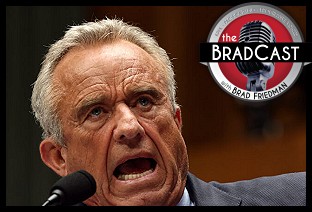 RFK Jr.'s War on the Science of Public Health: 'BradCast' 9/4/25
RFK Jr.'s War on the Science of Public Health: 'BradCast' 9/4/25  'Green News Report' 9/4/25
'Green News Report' 9/4/25
 Trump's 'Cook'ed-Up Mortgage Fraud Claims: 'BradCast' 9/3/25
Trump's 'Cook'ed-Up Mortgage Fraud Claims: 'BradCast' 9/3/25  While We Were Out:
While We Were Out: 'Green News Report' 9/2/25
'Green News Report' 9/2/25 Sunday 'Shots and Prayers' Toons
Sunday 'Shots and Prayers' Toons Cynical Hypocrisy Behind Right-Wing Opposition To CA's 'Election Rigging Response Act'
Cynical Hypocrisy Behind Right-Wing Opposition To CA's 'Election Rigging Response Act'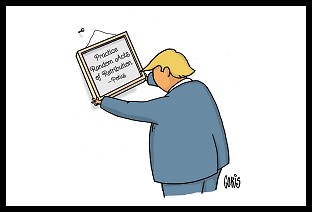 Sunday 'Random Acts of' Toons
Sunday 'Random Acts of' Toons From CA's 'Nuclear Deterrence' Map to Newsom's Trolling to Trump's 'Fascist Theatre' and Beyond: 'BradCast' 8/21/25
From CA's 'Nuclear Deterrence' Map to Newsom's Trolling to Trump's 'Fascist Theatre' and Beyond: 'BradCast' 8/21/25 'Green News Report' 8/21/25
'Green News Report' 8/21/25 'Americanism' and Trump's 'Stalinesque' Plot to Whitewash History: 'BradCast' 8/20/25
'Americanism' and Trump's 'Stalinesque' Plot to Whitewash History: 'BradCast' 8/20/25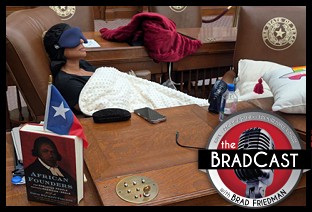 Texas GOP Imprisons Dem State Lawmaker in State House Chamber: 'BradCast' 8/19/25
Texas GOP Imprisons Dem State Lawmaker in State House Chamber: 'BradCast' 8/19/25 'Green News Report' 8/19/25
'Green News Report' 8/19/25 Trump, Nazis and Trump's Nazified Elections: 'BradCast' 8/18/25
Trump, Nazis and Trump's Nazified Elections: 'BradCast' 8/18/25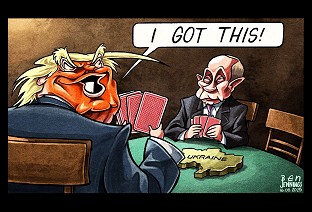 Sunday '
Sunday ' Newsom's 'Election Rigging Response Act'; FCC's License Renewal for Sock-Puppeting Sinclair: 'BradCast' 8/14/25
Newsom's 'Election Rigging Response Act'; FCC's License Renewal for Sock-Puppeting Sinclair: 'BradCast' 8/14/25 'Green News Report' 8/14/25
'Green News Report' 8/14/25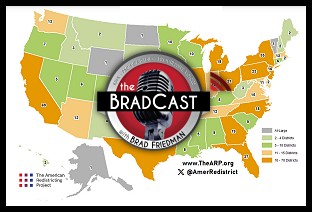 140 New House Reps?: Moving Beyond the Gerrymandering Wars: 'BradCast' 8/13/25
140 New House Reps?: Moving Beyond the Gerrymandering Wars: 'BradCast' 8/13/25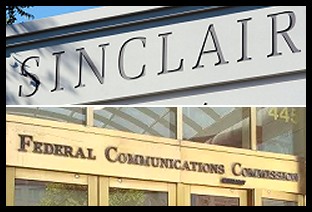 FCC Renews Sinclair Licenses Despite Complaint from Petitioner Who Died
FCC Renews Sinclair Licenses Despite Complaint from Petitioner Who Died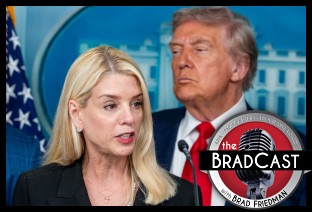 It's Not About the Rule of Law, It's About Authoritarian Control: 'BradCast' 8/12/25
It's Not About the Rule of Law, It's About Authoritarian Control: 'BradCast' 8/12/25 After Vaccine Cancels, CDC Shooting, Former Officials Want RFK Out: 'BradCast' 8/11/25
After Vaccine Cancels, CDC Shooting, Former Officials Want RFK Out: 'BradCast' 8/11/25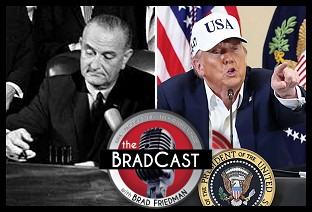 Trump Wars Against Greem Energy, Democracy on VRA's 60th: 'BradCast' 8/7
Trump Wars Against Greem Energy, Democracy on VRA's 60th: 'BradCast' 8/7 Media Conglomerates Continue Trump Capitulation: 'BradCast' 8/6/25
Media Conglomerates Continue Trump Capitulation: 'BradCast' 8/6/25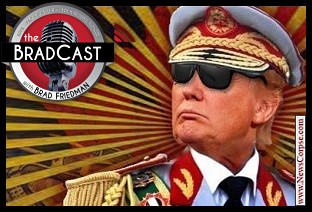 Banana Republican: Trump Shoots the Labor Statistics Messenger: 'BradCast' 8/5/25
Banana Republican: Trump Shoots the Labor Statistics Messenger: 'BradCast' 8/5/25 All's Fair in Love, War and, Apparently, Part-isan Gerrymandering: 'BradCast' 8/4/25
All's Fair in Love, War and, Apparently, Part-isan Gerrymandering: 'BradCast' 8/4/25
 VA GOP VOTER REG FRAUDSTER OFF HOOK
VA GOP VOTER REG FRAUDSTER OFF HOOK Criminal GOP Voter Registration Fraud Probe Expanding in VA
Criminal GOP Voter Registration Fraud Probe Expanding in VA DOJ PROBE SOUGHT AFTER VA ARREST
DOJ PROBE SOUGHT AFTER VA ARREST Arrest in VA: GOP Voter Reg Scandal Widens
Arrest in VA: GOP Voter Reg Scandal Widens ALL TOGETHER: ROVE, SPROUL, KOCHS, RNC
ALL TOGETHER: ROVE, SPROUL, KOCHS, RNC LATimes: RNC's 'Fired' Sproul Working for Repubs in 'as Many as 30 States'
LATimes: RNC's 'Fired' Sproul Working for Repubs in 'as Many as 30 States' 'Fired' Sproul Group 'Cloned', Still Working for Republicans in At Least 10 States
'Fired' Sproul Group 'Cloned', Still Working for Republicans in At Least 10 States FINALLY: FOX ON GOP REG FRAUD SCANDAL
FINALLY: FOX ON GOP REG FRAUD SCANDAL COLORADO FOLLOWS FLORIDA WITH GOP CRIMINAL INVESTIGATION
COLORADO FOLLOWS FLORIDA WITH GOP CRIMINAL INVESTIGATION CRIMINAL PROBE LAUNCHED INTO GOP VOTER REGISTRATION FRAUD SCANDAL IN FL
CRIMINAL PROBE LAUNCHED INTO GOP VOTER REGISTRATION FRAUD SCANDAL IN FL Brad Breaks PA Photo ID & GOP Registration Fraud Scandal News on Hartmann TV
Brad Breaks PA Photo ID & GOP Registration Fraud Scandal News on Hartmann TV  CAUGHT ON TAPE: COORDINATED NATIONWIDE GOP VOTER REG SCAM
CAUGHT ON TAPE: COORDINATED NATIONWIDE GOP VOTER REG SCAM CRIMINAL ELECTION FRAUD COMPLAINT FILED AGAINST GOP 'FRAUD' FIRM
CRIMINAL ELECTION FRAUD COMPLAINT FILED AGAINST GOP 'FRAUD' FIRM RICK SCOTT GETS ROLLED IN GOP REGISTRATION FRAUD SCANDAL
RICK SCOTT GETS ROLLED IN GOP REGISTRATION FRAUD SCANDAL VIDEO: Brad Breaks GOP Reg Fraud Scandal on Hartmann TV
VIDEO: Brad Breaks GOP Reg Fraud Scandal on Hartmann TV RNC FIRES NATIONAL VOTER REGISTRATION FIRM FOR FRAUD
RNC FIRES NATIONAL VOTER REGISTRATION FIRM FOR FRAUD EXCLUSIVE: Intvw w/ FL Official Who First Discovered GOP Reg Fraud
EXCLUSIVE: Intvw w/ FL Official Who First Discovered GOP Reg Fraud GOP REGISTRATION FRAUD FOUND IN FL
GOP REGISTRATION FRAUD FOUND IN FL

































